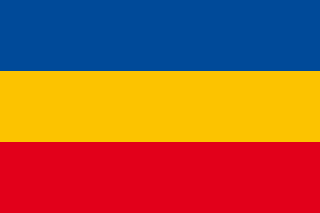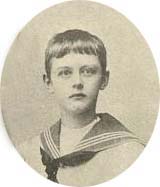
The Duchy of Mecklenburg-Schwerin was a duchy in northern Germany created in 1701, when Frederick William and Adolphus Frederick II divided the Duchy of Mecklenburg between Schwerin and Strelitz. Ruled by the successors of the Nikloting House of Mecklenburg, Mecklenburg-Schwerin remained a state of the Holy Roman Empire along the Baltic Sea littoral between Holstein-Glückstadt and Duchy of Pomerania.

Duchess Elisabeth Albertine of Saxe-Hildburghausen was a Duchess of Mecklenburg-Strelitz. She served as regent for her son after the deaths in 1752–1753 of her husband and brother-in-law of, respectively, the ducal appanage of Mirow and of the Duchy of Mecklenburg-Strelitz.

The House of Mecklenburg, also known as Nikloting, is a North German dynasty that ruled until 1918 in the Mecklenburg region, being among the longest-ruling families of Europe. Queen Juliana of the Netherlands (1909-2004), former Queen of the Netherlands (1948-1980), was an agnatic member of this house.

Charles II was ruler of the state of Mecklenburg-Strelitz from 1794 until his death. Originally ruling as duke, he was raised to the rank of grand duke in 1815. Prior to succeeding to the throne he served as Governor of Hanover from 1776 to 1786.

The Grand Duchy of Mecklenburg-Schwerin was a territory in Northern Germany held by the House of Mecklenburg residing at Schwerin. It was a sovereign member state of the German Confederation and became a federated state of the North German Confederation and finally of the German Empire in 1872.

The Grand Duchy of Mecklenburg-Strelitz was a territory in Northern Germany, held by the younger line of the House of Mecklenburg residing in Neustrelitz. Like the neighbouring Grand Duchy of Mecklenburg-Schwerin, it was a sovereign member state of the German Confederation and became a federated state of the North German Confederation and finally of the German Empire upon the unification of 1871. After World War I and the German Revolution of 1918–19 it was succeeded by the Free State of Mecklenburg-Strelitz.

Frederick Francis IV was the last Grand Duke of Mecklenburg-Schwerin and regent of Mecklenburg-Strelitz. He inherited the throne when he was fifteen years old in 1897 and was forced to renounce it in 1918.

Duke John Albert of Mecklenburg was a member of the House of Mecklenburg-Schwerin who served as the regent of two states of the German Empire. Firstly from 1897 to 1901 he was regent of Grand Duchy of Mecklenburg-Schwerin for his nephew Frederick Francis IV, Grand Duke of Mecklenburg, and from 1907 to 1913 he was Regent of the Duchy of Brunswick.

Adolphus Frederick VI was the last reigning grand duke of Mecklenburg-Strelitz.

Adolphus Frederick V was reigning grand duke of Mecklenburg-Strelitz from 1904 to 1914.

Charles Michael, Duke of Mecklenburg was an officer in the Imperial Russian Army, heir presumptive to the throne of Mecklenburg-Strelitz and from 1918 head of the Grand Ducal House.

George, Duke of Mecklenburg was the head of the House of Mecklenburg-Strelitz from 1934 until his death. Through his father, he was a descendant of Emperor Paul I of Russia.
Georg Alexander, Duke of Mecklenburg was the head of the House of Mecklenburg-Strelitz from 1963 until his death.

Borwin, Duke of Mecklenburg has been the head of the House of Mecklenburg-Strelitz since 1996 and of the entire House of Mecklenburg since 2001. The death of Friedrich Franz, Hereditary Grand Duke of Mecklenburg-Schwerin - his god father - the last male member of the House of Mecklenburg-Schwerin on 31 July 2001 made Strelitz the only remaining line of the House of Mecklenburg, which ruled in Mecklenburg until 1918.
Friedrich Franz, Hereditary Grand Duke of Mecklenburg-Schwerin was the heir apparent to the throne of Mecklenburg-Schwerin and a member of the Waffen-SS.

Princess Friederike Caroline Luise of Hesse-Darmstadt was a member of the House of Hesse and by marriage a Duchess of Mecklenburg-Strelitz.

Duke Paul Frederick of Mecklenburg was a member of the House of Mecklenburg-Schwerin and general of the Mecklenburg cavalry.

Duke Paul Frederick of Mecklenburg was a member of the House of Mecklenburg-Schwerin and a German soldier and sailor. He was styled His Highness Duke Paul Frederick of Mecklenburg.

Ludwig of Mecklenburg-Schwerin, Hereditary Prince o Mecklenburg-Schwerin was heir to the Dukedom of Mecklenburg-Schwerin from 1756 to his death. He was also the father of the first Grand Duke of Mecklenburg-Schwerin, Frederick Francis I.

Georg August was a member of the House of Mecklenburg-Strelitz and titular duke of Mecklenburg-Strelitz.






















